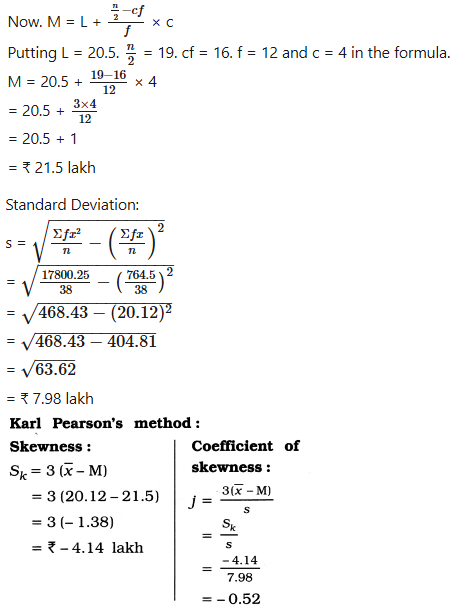The frequency distribution of the given data is combined type. Therefore mode is not defined.
Hence, using Sk = 3 (x – M) and we calculate skewness and coefficient the formula j = 3(x¯−M)s of skewness.

Mean:
x̄ = \(\frac{Σfx}{n}=\frac{764.5}{38}\)
= ₹ 20.12 lakh
Median:
M class = class that Includes (n2)th observation
= class that includes (382)th observation
= class that includes 19th observation
Referring to column cf.
M class = 21 – 24
In exclusive form. M class = 20.5 – 24.5

Type of skewness:
Sk = – 4.14. Therefore, the given frequency distribution Is negatively skewed.